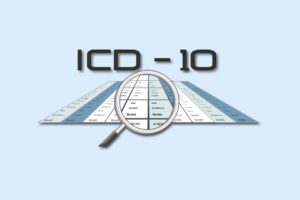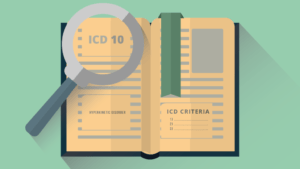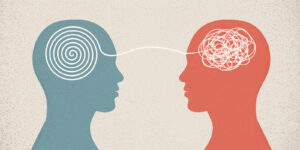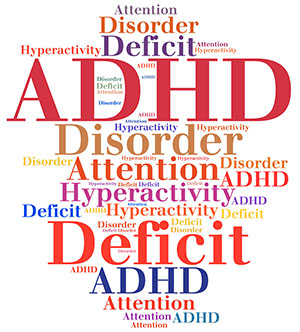Attention Deficit Hyperactivity Disorder, or ADHD, is a mental disorder that affects how you process information and can cause problems with focus, hyperactivity, and impulsiveness. The condition has been around for a long time, but it was only recently added to the International Classification of Diseases (ICD-10), which is a list of medical conditions maintained by the World Health Organization. In this blog post, we will discuss what ADHD is, how it is diagnosed, and what treatment options are available.
Contents
Defining ADHD
ADHD is a mental disorder that is characterized by problems with focus, hyperactivity, and impulsiveness. The symptoms of ADHD can vary from person to person, but they typically result in difficulties with school, work, or social interactions. People with ADHD may also have trouble sleeping or be easily distracted.
There are three types of ADHD: predominantly inattentive type, predominantly hyperactive-impulsive type, and combined type. The predominantly inattentive type is characterized by problems with focus and attention. The predominantly hyperactive-impulsive type is characterized by problems with hyperactivity and impulsiveness. The combined type is diagnosed when a person has symptoms of both inattentive and hyperactive-impulsive types.
What Is ICD-10?
The ICD-10 is the tenth revision of the International Statistical Classification of Diseases and Related Health Problems (ICD), a medical classification list by the World Health Organization (WHO). It contains codes for diseases, signs, and symptoms, abnormal findings, complaints, social circumstances, and external causes of injury or disease.
ADHD In ICD-10

In ICD-10, ADHD is classified under “F90.0 – Attention Deficit Hyperactivity Disorder Predominantly Inattentive Type” and “F90.0 – Attention Deficit Hyperactivity Disorder Combined Type”. The code for the predominantly inattentive type is F90.0, and the code for the combined type is F90.01.
Why Was ADHD Added to ICD?
The main reason why ADHD was added to ICD-10 was due to its high prevalence rate. According to the Centers for Disease Control and Prevention (CDC), about 11% of children aged four to 17 have been diagnosed with ADHD in the United States. This is a significant increase from previous years, which suggests that more people are becoming aware of the condition and seeking treatment.
How Is ADHD Diagnosed From ICD-10?
ADHD is typically diagnosed by a mental health professional, such as a psychiatrist or psychologist. To be diagnosed with ADHD, a person must have symptoms that are present for at least six months and that interfere with their daily life. A diagnosis can also be made if a person has symptoms that are present for at least 12 months, but they may not meet the full criteria for ADHD.
ADHD Symptoms

ADHD is typically diagnosed by a mental health professional, such as a psychiatrist or psychologist. To be diagnosed with ADHD, a person must have symptoms that are present before the age of 12 and that interfere with their daily life. A diagnosis can only be made after ruling out other potential causes of the symptoms,
According to ICD-10, the following are the criteria for diagnosing ADHD.
There are two types of ADHD: inattentive type and hyperactive-impulsive type. In order to be diagnosed with the inattentive type, a person must have at least six of the following symptoms:
- problems paying attention
- problems listening
- difficulty following instructions
- trouble with organization
- avoidance of tasks that require sustained mental effort
- forgetfulness
To be diagnosed with the hyperactive-impulsive type, a person must have at least six of the following symptoms:
- fidgeting or squirming
- leaving their seat when they’re not supposed to
- running or climbing when they’re not supposed to
- difficulty playing quietly
- talking excessively
- blurting out answers before questions have been completed
- interrupting others
A diagnosis of ADHD can also be made if a person has symptoms of both the inattentive and hyperactive-impulsive types. In order to be diagnosed with ADHD, a person must have at least six symptoms from each category.
Tests Used To Diagnose ADHD

It is important to note that there is no single test that can diagnose ADHD. Instead, a diagnosis is made based on a comprehensive evaluation that includes a medical history, physical exam, and psychological testing.
There are several different rating scales and questionnaires that can be used to diagnose ADHD, such as the Conners’ Rating Scales and the Vanderbilt ADHD Diagnostic Parent Rating Scale. A diagnosis of ADHD is usually made after taking into account information from multiple sources, such as parents, teachers, and medical professionals.
ICD 10 also states that ADHD can only be diagnosed in children aged six years or older. This is because the symptoms of ADHD can vary significantly over time and may not be present in all situations. For example, a child with ADHD may be able to focus on a favorite activity but have difficulty paying attention in school.
Risk Factors for ADHD
Several risk factors can increase the likelihood of developing ADHD. These include:
•Genetic factors – ADHD is often passed down from parents to children
•Exposure to toxins – certain substances, such as lead, can damage the brain and increase the risk of ADHD
•Premature birth – babies born before 37 weeks gestation are more likely to develop ADHD
•Maternal smoking – mothers who smoke during pregnancy are more likely to have children with ADHD
Treatment Options

There are many different treatment options available for ADHD, and the best course of action will vary from person to person. There is no single “cure” for ADHD, but there are several effective treatments that can help people manage their symptoms. These include:
• Stimulant medication – Stimulants are the most commonly prescribed type of medication for ADHD. They work by increasing levels of dopamine and norepinephrine in the brain, which can improve focus and concentration.
• Non-stimulant medication – Non-stimulant medications, such as atomoxetine (Strattera) and guanfacine (Intuniv), can also be effective in treating ADHD. These medications work by affecting different neurotransmitters in the brain than stimulants.
• Psychotherapy – Psychotherapy, or “talk therapy,” can help treat ADHD. Cognitive-behavioral therapy (CBT) is a type of psychotherapy that can teach people with ADHD how to manage their symptoms.
• Parent training – Parent training programs are designed to help parents learn effective strategies for managing their child’s ADHD symptoms.
• School accommodations – Children with ADHD may qualify for special education services or other school accommodations, such as extended time on tests or preferential seating.
No matter what treatment option you choose, it is important to work with a qualified professional who can tailor the intervention to your specific needs. If you or someone you know has been diagnosed with ADHD, don’t hesitate to reach out for help.
Conclusion
In conclusion, ADHD is a real and serious condition that can have a significant impact on a person’s life. However, there are many effective treatments available that can help people manage their symptoms. If you or someone you know has been diagnosed with ADHD, don’t hesitate to reach out for help.
For more information, please contact MantraCare. ADHD is a neurodevelopmental disorder characterized by difficulty in paying attention, hyperactivity, and impulsivity. If you have any queries regarding Online ADHD Counseling experienced therapists at MantraCare can help: Book a trial ADHD therapy session


